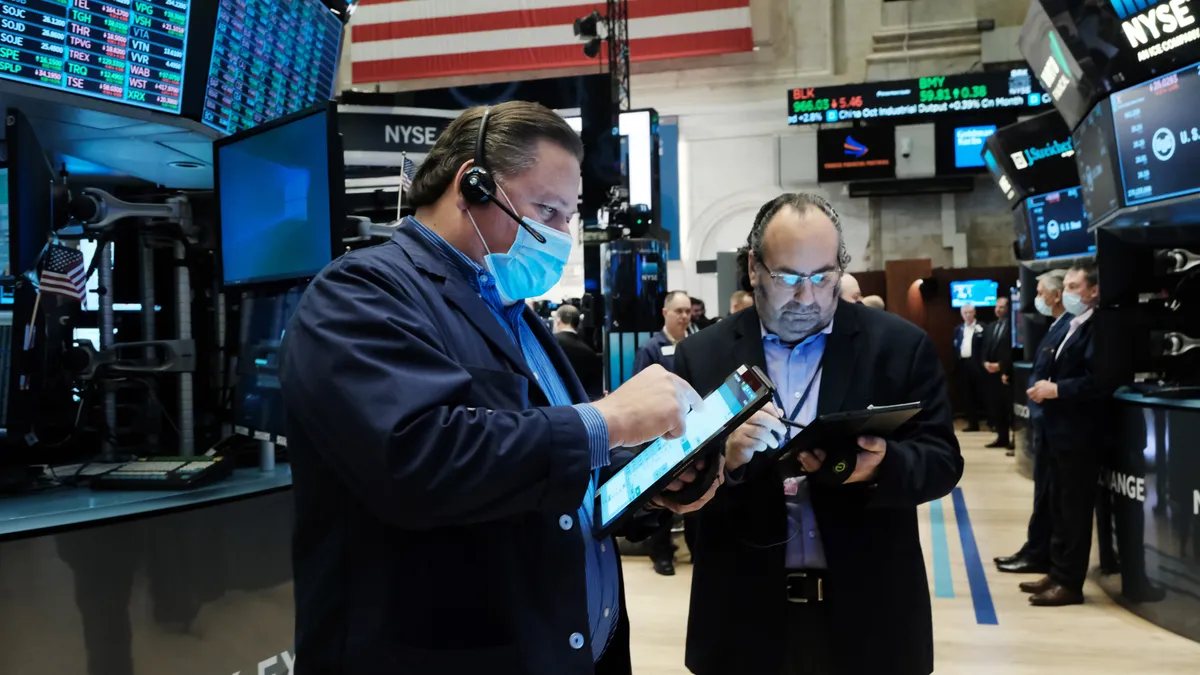Dive Brief:
- The share prices of companies worldwide that engaged in mergers and acquisitions during the fourth quarter outperformed equity markets by 5.2 percentage points, with North American deal-makers surging ahead of regional indexes by 9.4 percentage points, Willis Towers Watson said Wednesday.
- The boost to acquiring companies during Q4 concluded a year in which the volume of deals valued at more than $100 million sagged 19%, from 1,047 transactions in 2021 to 853 in 2022, WTW said in a joint study with Bayes Business School in London.
- “Geopolitical tensions, inflation and rising interest rates had an inevitable impact last year on deal activity,” Duncan Smithson, senior director of M&A Consulting at WTW, said. He predicted a rebound in deals to pre-pandemic levels in 2023.
Dive Insight:
The slump in M&A is a symptom of the many market challenges that CFOs face in early 2023. Monetary policy tightening, volatility in stock prices and a rising number of recession warnings disrupted CFO financing strategies in 2022, including plans for M&A.
Many CFOs who completed deals last year did not immediately see a payoff, according to WTW.
The share prices of acquiring companies worldwide during 2022 lagged companies that avoided deals by 0.8 percentage point after gaining a 1.4 percentage point edge in 2021, WTW said. WTW tracked share prices from six months prior to the announcement of a deal until the end of the quarter, using the MSCI World Index for comparison.
Five M&A trends will likely unfold in 2023, Smithson said, including:
1. The “small purchase effect.” The rising number of recession forecasts will probably prompt buyers to spurn expensive deals and primarily focus on smaller transactions. During Q3, deal-makers closed no deals valued at more than $10 billion for the first time in more than three years, while the number of deals valued at between $1 billion and $10 billion fell from 67 in 2021 to 49, WTW said.
2. Opportunities in distressed M&A. High inflation, concerns about a downturn and other economic headwinds will likely compel companies to shed non-core assets, Smithson said in a statement. For example, energy firms will probably continue to divest carbon-intensive operations. The upshot: Some buyers will find opportunities to expand their services or product line at a discount.
3. From defense to offense in technology. Digital transformation and stock price volatility will probably spark a surge in acquisitions focused on machine learning and artificial intelligence, Smithson said. M&A is “the fastest way for business to transform in order to remain relevant and resilient.”
4. Geopolitical tremors. Bruised by disruptions to supply chains from the pandemic and other global shocks, companies will turn to M&A to revamp supply networks by “onshoring” or “nearshoring” and improve operational resilience, Smithson said.
Cross-border M&A fell last year amid geopolitical upheaval, according to WTW. Deal-makers will seek out stability and predictability through “friend-shoring” transactions with trusted partners, Smithson said.
5. ESG in spotlight. Investors increasingly demand that companies follow environmental, social and governance best practices, prompting deals with a tinge of “green,” Smithson said. Companies need to expect more scrutiny and pressure for transparency on issues related to corporate sustainability.














